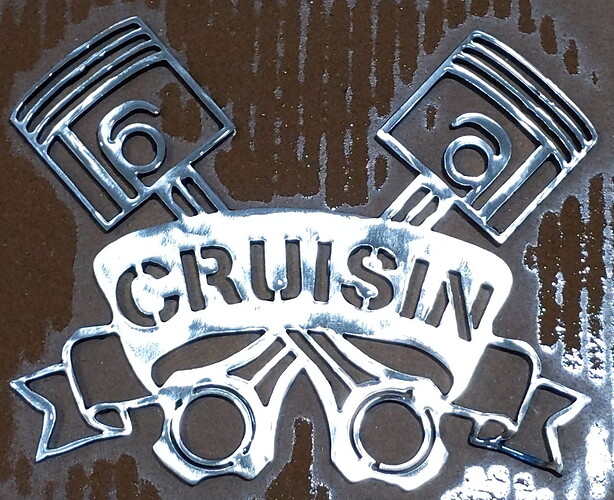I am not going to comment on that. But the used consumables you have in the picture needed to be changed and the shield has some burn marks buy some of the air holes, were they plugged up.
let’s say the shield plugged-up due to, idk, slag or whatever,… would that of been the reason why the electrode and nozzle wore out so quickly?
It didn’t do it any good that’s for sure.
What is your plunge rate set at?
there’s no option to adjust that setting, that I’m aware of, in Fusion or FireControl. if there’s some kind of hidden menu, please let me know!
I’m not 100% with fire control I don’t use it or langmuirs z axis but there should be a way to change the ipm of the z axis. Unless its just set in the post process as a fixed rate but I doubt that.
I’m sure someone will say something if I’m wrong but any z axis on another other table you can set it.
if i’m able to find a way to adjust the setting, what should i set it to?
The easiest way to find what is being used for plunge rate is to look at the generated gcode.
I don’t use Fusion but from looking at other posters gcode I don’t think it is explicitly set by the Langmuir provided post and ends up using the last commanded Z speed for IHS which is 20 IPM.
For SheetCam you’ll see something like this:
G0 Z0.094 (Pierce Height)
M3
G4 P0.6
G1 Z0.062 F50.0 (Cut Height)
In the move to cut height the F50 is setting the plunge rate, the speed at which the Z axis moves.
Here is similar code from another posters Fusion generated gcode
G38.4 Z0.5 F20.
G92 Z0.
G0 Z0.04 (IHS Springback + Backlash)
G92 Z0.
G0 Z0.15 (Pierce Height)
M3
G4 P0.5
G0 Z0.063 (Cut Height)
Note there is no speed in the move to cut height, so instead the speed set on the first line F20 will be used.
I’d check yours to see what is used. If it is indeed 20IPM then this will not be the cause of your problems. As 20IPM is on the slow end, so if anything it would act as increasing your pierce delay. FWIW I typically use 50 IPM.
If I were you I would install a screen recording program such as OBS. This way you can record what Firecontrol is seeing wrt voltages etc (oh why is there no logging…). Then point your phone at the sheet to record what is happening there. If you get the same failure you can review the recordings to help see what is going on.
What a strange sequence. Why not just do G92 Z-0.04 in the first one?
I saw that same sequence when running the machine today, and I think they’re just using it as a redundancy.
I’ve recorded the machine with OBS before but that was to diagnose problems with the torch height controller. I’ll make sure to turn OBS on the next time I cut so if I get a failure I can try and pinpoint what’s going on.
this machine is driving me absolutely crazy. lol.
On my table with thc plunge rate is set at 150ipm but I don’t use fire control or fusion or sheetcam with that table.
UPDATE:
Found something new last night. <3 If you have THC enabled, it will detect a misfire, pause automatically, then let you go back and try to fire the torch again. WHY DID NOBODY TELL ME THIS!?! And why is that awesome lifesaving feature not mentioned anywhere in any documentation or any tutorial or anything from Langmuire???
…and before you bash me for having THC turned off, i’m cutting 10ga, it isn’t really neccessary to use, and it has been randomly throwing error codes and etc for some unkown reason. thinking my voltage divider could be to blame, but haven’t traced the problem down yet. got enough headaches already…
anyway, here are the results from last night,
obviously this is after lots of grinding (not the fun kind),
and a nice heavy coat of Crystal Gloss clearcoat
Another update:
I found that my nozzles are blowing out a lot faster than you would expect. so that was contributing to some of the issues with piercing.
the other major factor that I just verified today, when you use Fusion, langmuir has a default springback value. this value is wrong for 10 gauge. nowhere in langmuir’s instructions did they provide a chart for spring back, nor did they warn you that spring back changes for different types of material. I thought “spring back” was a fancy-pants name for the backlash compensation in the z axis (like every other machine in the world)… but no it’s actually for the metal bending when the tip touches it… since I’m using 10 gauge, I set my springback to zero, and immediately had better cuts with less kerf issues and less piercing problems.
however, I still need to use a fresh nozzle every 15 to 30 minutes of “torch-on” time, which is infuriating, but that’s a whole 'nother discussion…
anyway. I’m learning everyday. lololol.
